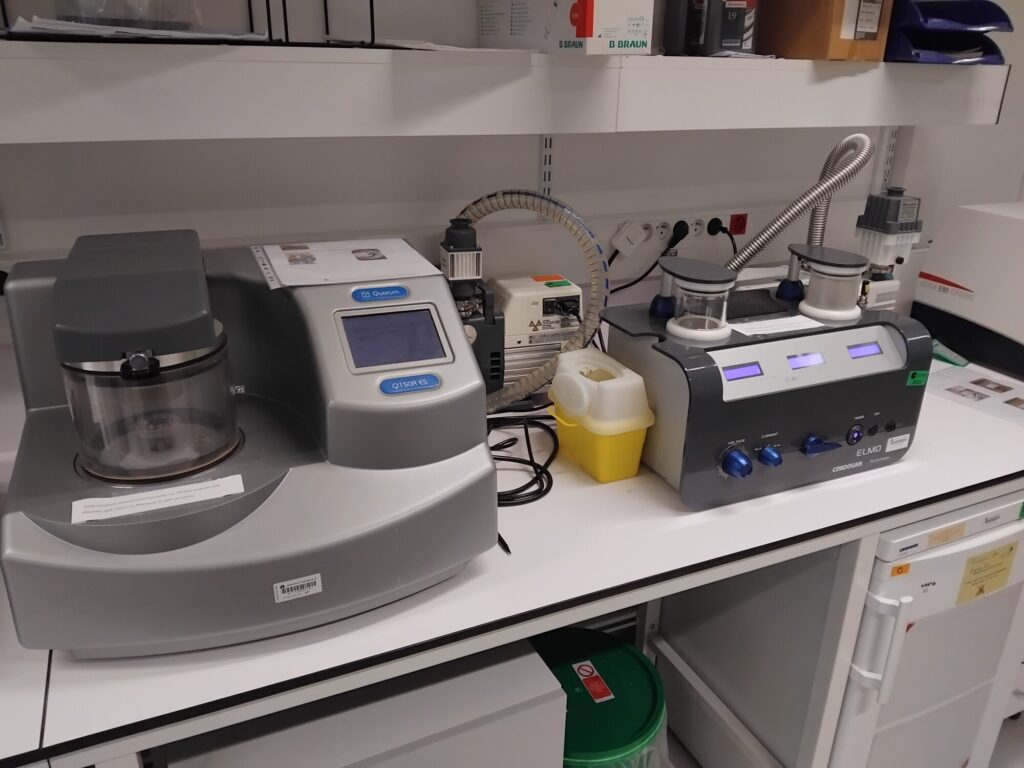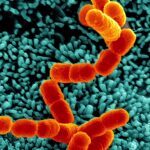Sample preparation room (26-00-13B) and uranyl acetate room (26-00-13A) : We have one room containing two hoods dedicated to the sample preparation for scanning and transmission electron microscopy. The uranyl acetate room is used for the negative staining (staining of protein complexes, bacteria or viruses in solution) or positive staining (staining of ultrathin sections with our ultramicrotomes). We propose uranyl acetate and other substitutes for the staining process.
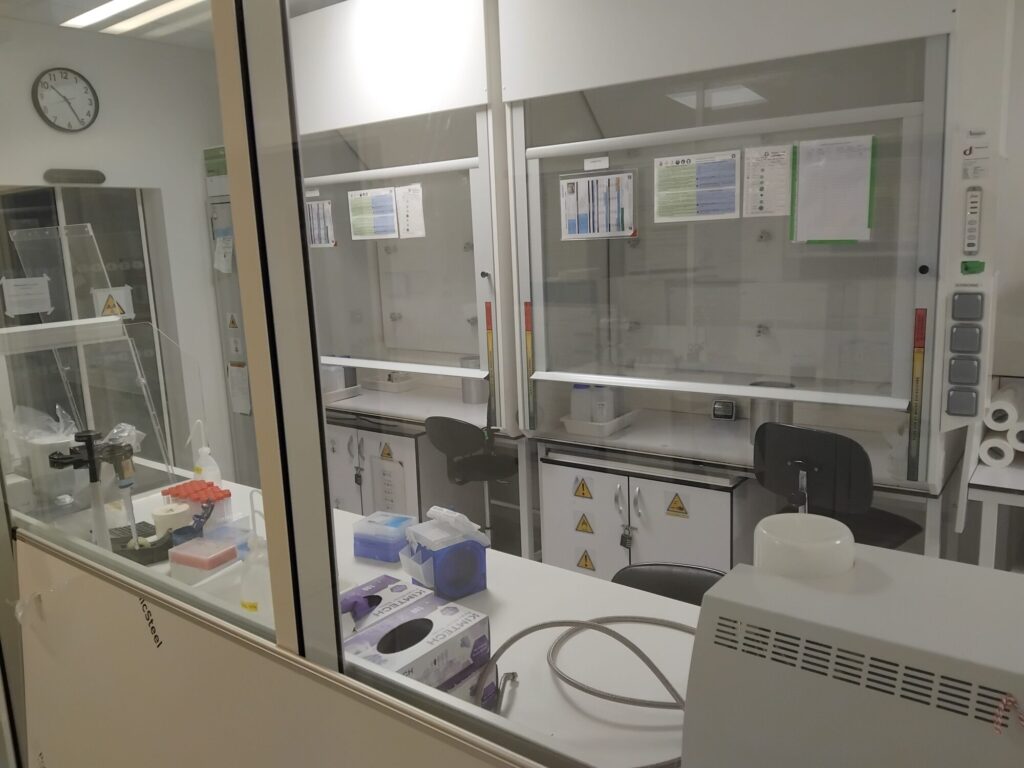
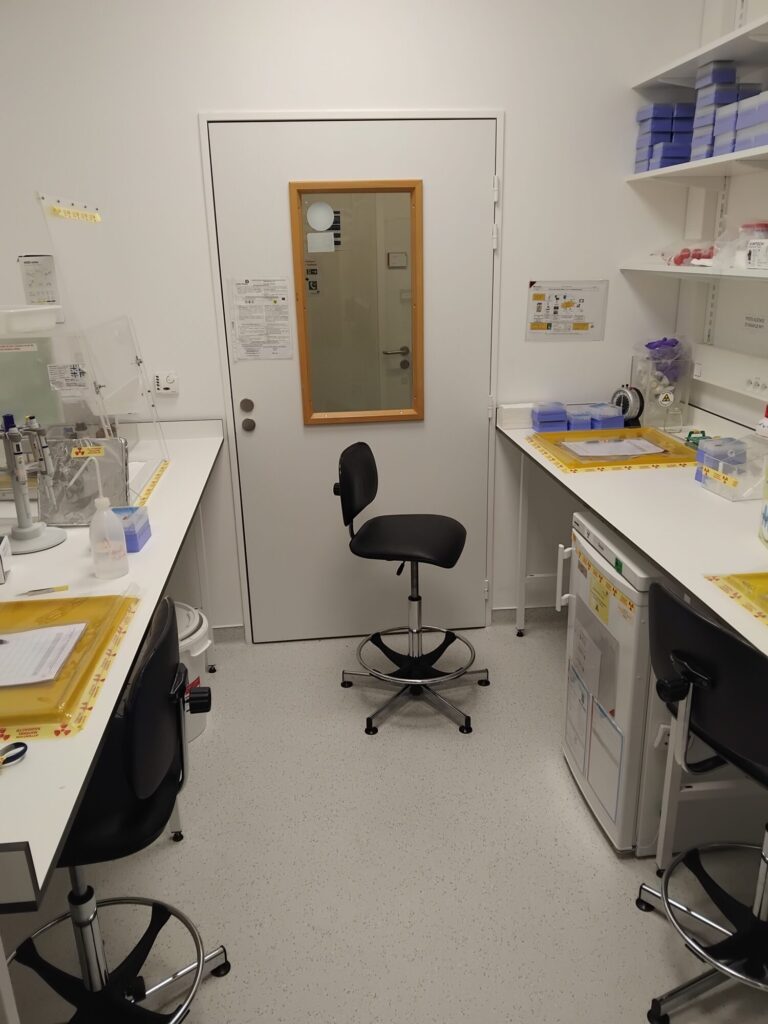
CPD300 : After the dehydration protocol, the samples are transferred from ethanol to ambient air by the critical point drying. This method uses liquid CO2, which gradually replaces the ethanol and then changes to its gaseous phase by altering the pressure and temperature. This allows the samples to be dehydrated without surface tension, thus preserving their structure.
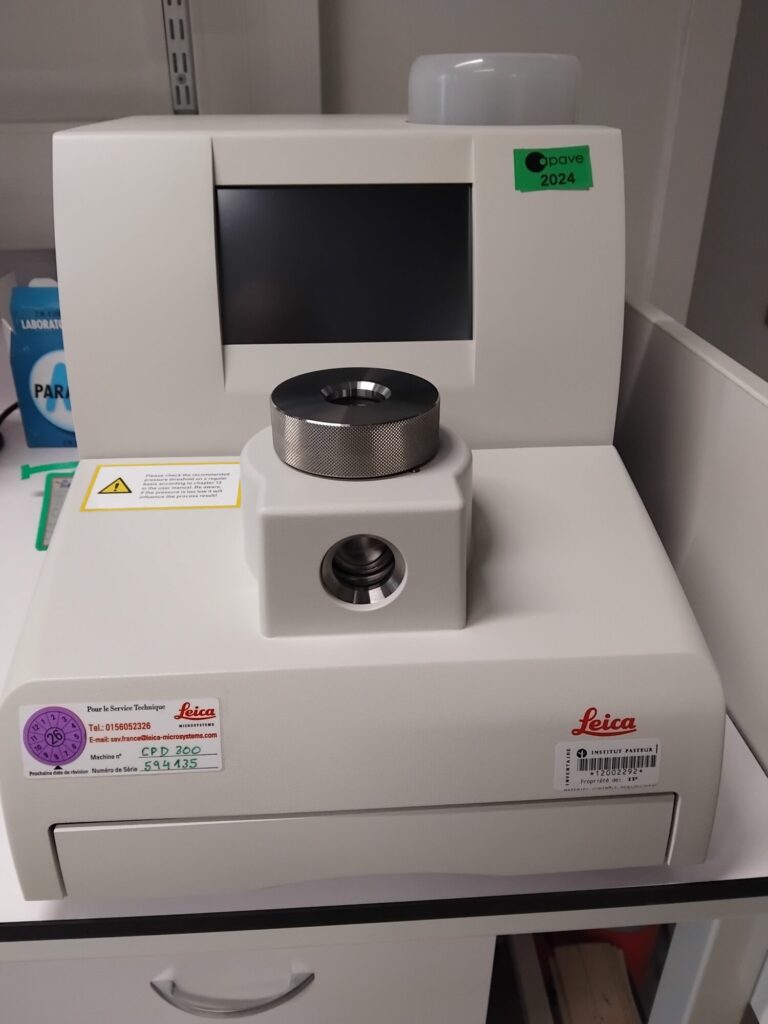
ACE 600 : This device will vaporize a small amount of metal in a vacuum chamber to coat dry samples with an invisible conductive layer. This prevents static electricity from blurring the image in the electron microscope. This is the essential final step after critical drying for observing fragile or insulating samples in the SEM.
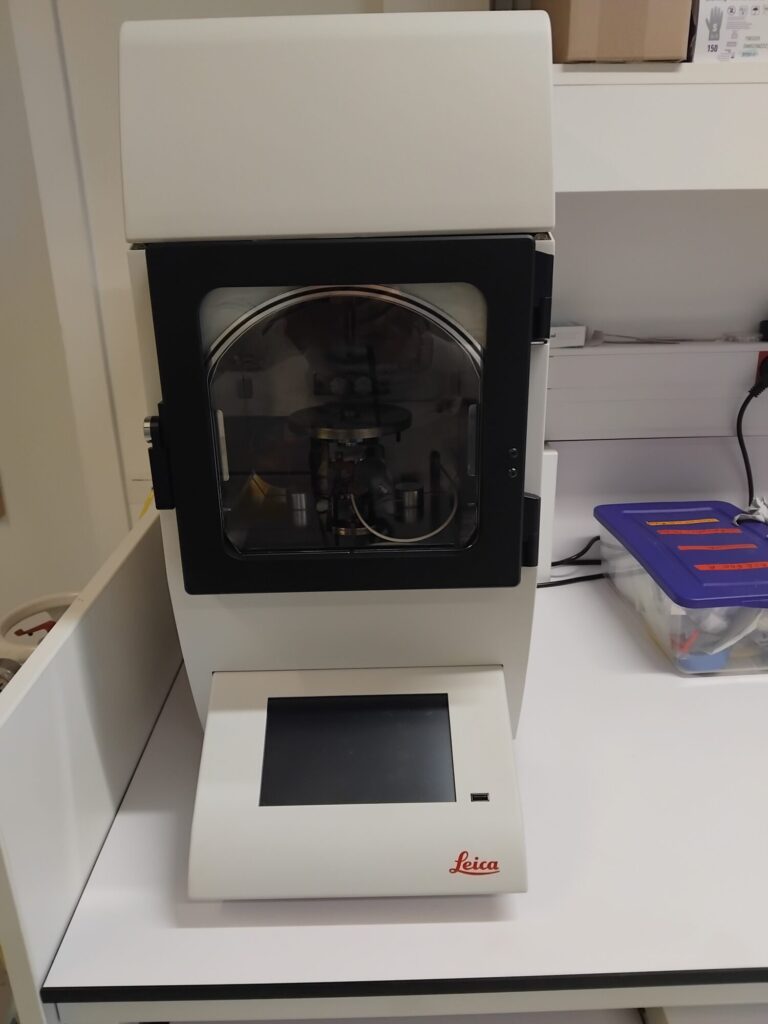
Leica AFS2 : After sample preparation using cryo-methods, it is possible to substitute ice by resin with heavy metals with controlled temperature conditions. This way, the sample ultrastructure is closer to its native state but has got enhanced contrasts due to the staining.
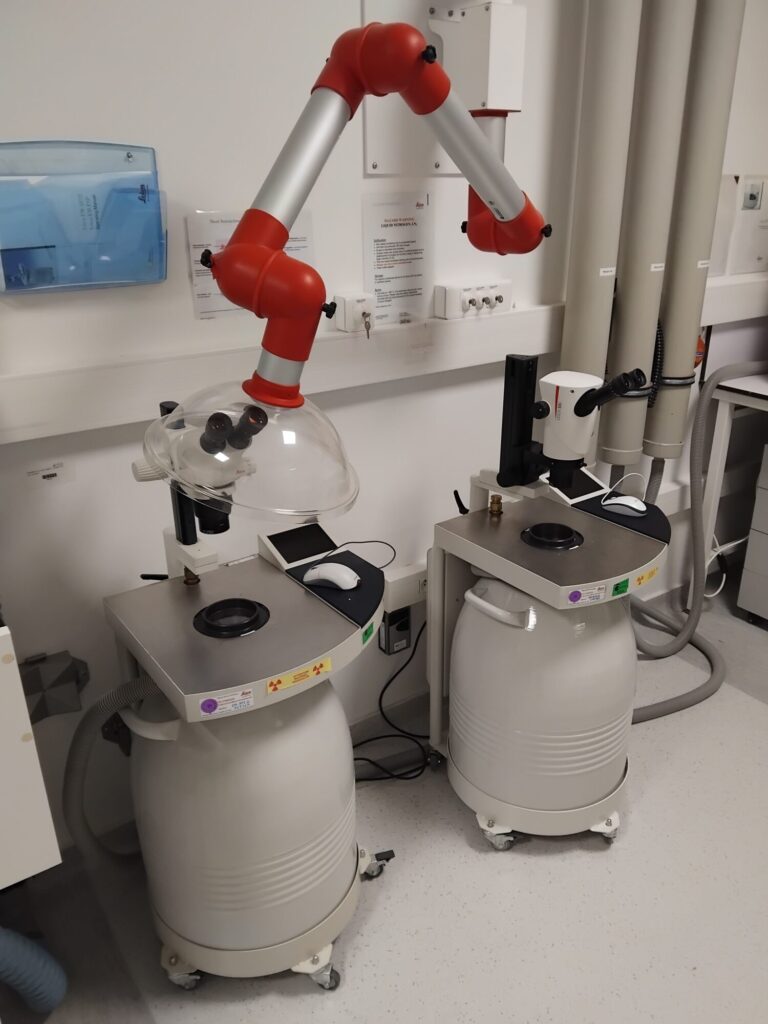
ELMO and Quorum Q150 ES : These devices allow to do what we call glow-discharge. They send positive or negative charges on an hydrophobic surface, allowing the sample adhesion. Their main use case is to prepare electron microscopy grids before a negative staining experiment.
